What a lushness the garden has in August and while I know that the winter months are drawing close we always have the memories of the summer garden to carry us through !
The largest grass in captivity … arundo donax hits it’s peak in August and dies completely back in December
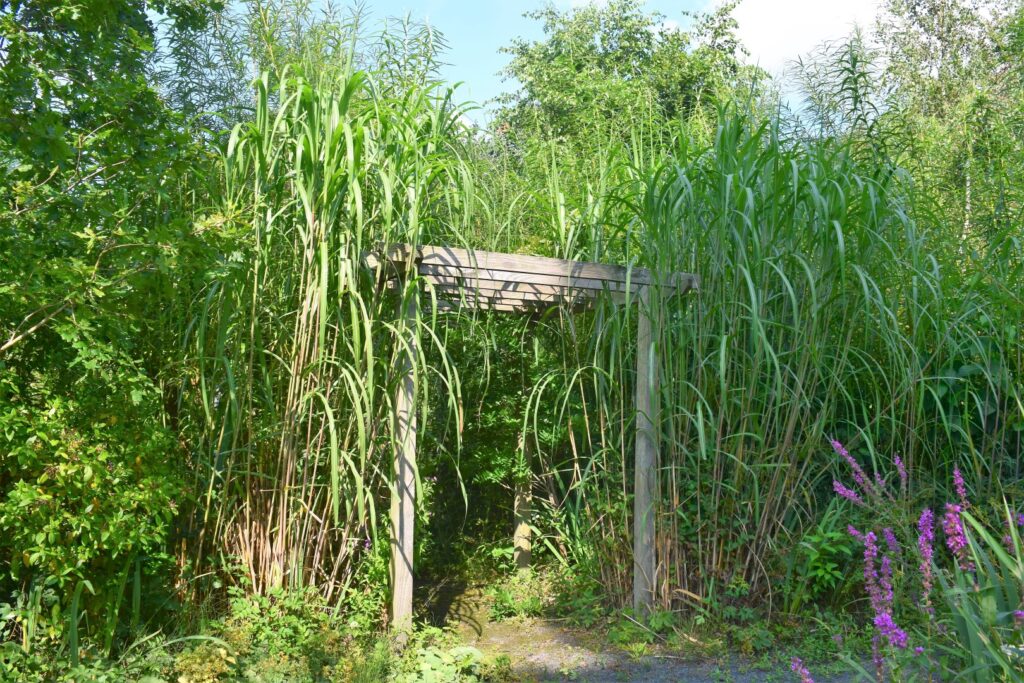
I wrote last month about roses and why I don’t grow them …well in Washington even roses are political ! The most famous Rose Garden in the world is the one installed at the White House by Jackie Kennedy in 1962 when she took a tradition going back a hundred years whereby the US President’s wife planted a rose in the garden off the West Wing but she didn’t plant just a single rose , she totally redesigned the entire garden for her husband to relax in but which John F Kennedy sadly didn’t live long enough to enjoy , assassinated in November 1963 in Dallas . Anything connected to Camelot as the Kennedy era became known is considered iconic in the US so until last year no other President’s wife dared touch the Rose Garden even though the original roses and crab apple trees had more or less been all replaced over the years due to the harsh winters in Washington . That is until Melania Trump , who else , had a go and revamped it and for a Republican to touch the Rose Garden especially a Trump , all hell broke loose and the row continues to this day ! Melania didn’t suddenly grab a secateurs and have a go at the roses , she brought in two of the best design teams in the US and employed a conservation expert throughout the project and most neutrals thought she had done a great job in bringing the Rose Garden up to date with cutting edge garden design … not enough for the Democrats though who are still seething … and shouting !
Despite her singular lack of judgement in marrying the Donald , I have a lot of time for Melania as after all she is Yugoslav and the ladies from there are tough and classy and she also impresses me because she says very little in public and was occasionally to be glimpsed walking up the steps to Air Force one wearing a jacket that says I don’t give a f… !
The purple loosestrife , lythrum salicaria , was particularly good this year , our wettish ground suits it very well as it loves river banks and lakes but where over time it can become invasive and a bit of a problem . It was introduced into the US in the 18th century from the UK and is considered an invasive plant over there now almost on the level of japanese knotweed . Our loosestrife , like the willows , iris and astilbe , came in on the wind and if you are not happy with any clump in the wrong place it is easily yanked out . It is a great self seeder and usually these are the best plants and in April I actually bought a commercially grown loosestrife in the garden centre thinking this must be a terrific variety … never grew much in the new water area , sulked while all around it’s self seeding cousins were romping away ! The plant got it’s common name when in medieval times it was ground up and used as powdered medicine for nerves and head aches .
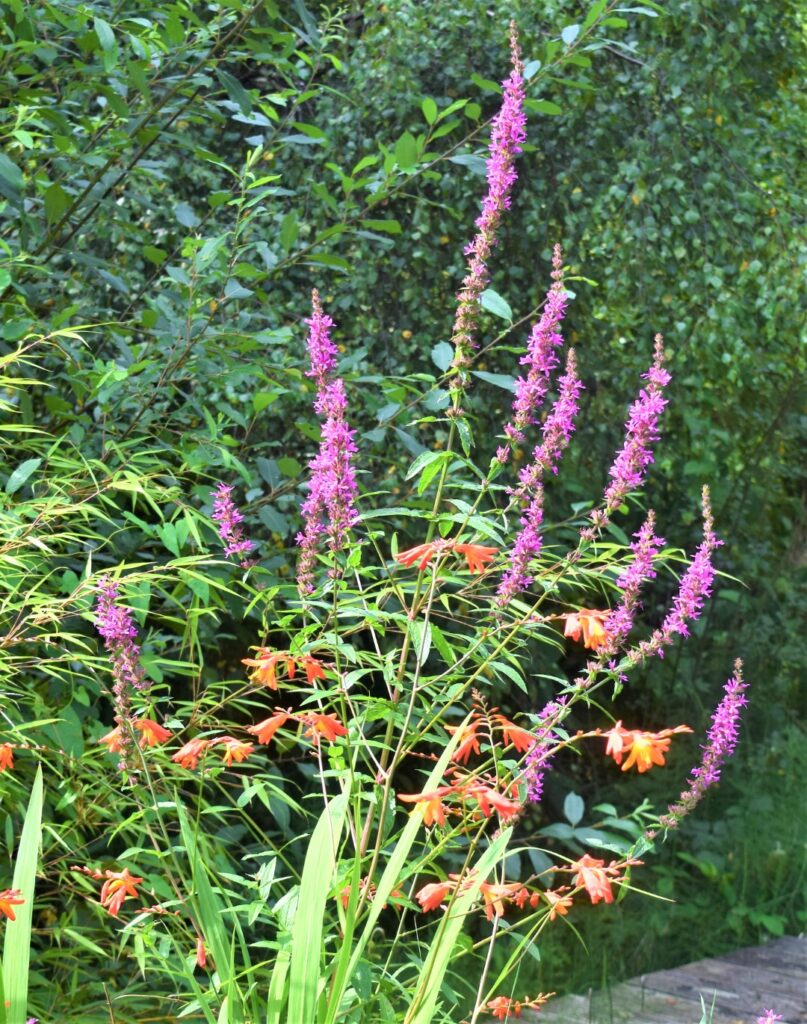
Weeding is probably the one thing people hate about gardening but for gardeners like the poor it is always with us and short of laying concrete or a patio it is absolutely necessary if you have any size of a garden . You can of course try and control with spraying weed killer but this apart from being decidedly non PC these days can also affect maybe even kill any plants it hits and it is difficult to be selective . Although I use round up every month on our paths but never use it among planting beds where I hand weed always and getting down hands and knees style I find is an excellent way of getting to know your soil and what plants are thriving .
I spent three weeks in August catch up hand weeding in the new water garden area after being away in July … I actually like weeding and take my time with a trowel taking out all the roots especially of couch grass and the creeping butter cup and I find the secret is to relax into it , get into a rhythm and set aside say an hour at a time and don’t get fixated on how much you can clear in that hour but concentrate on getting all the roots so that at the end of the hour even if you have only cleaned a few metres square at least you have done a comprehensive clean after which you can do a regular comb over with a hoe or spade … I use a long handled spade for this job as I find the hoe just isen’t strong enough to slice through the weeds .
The new Water Garden at the beginning in February 2021
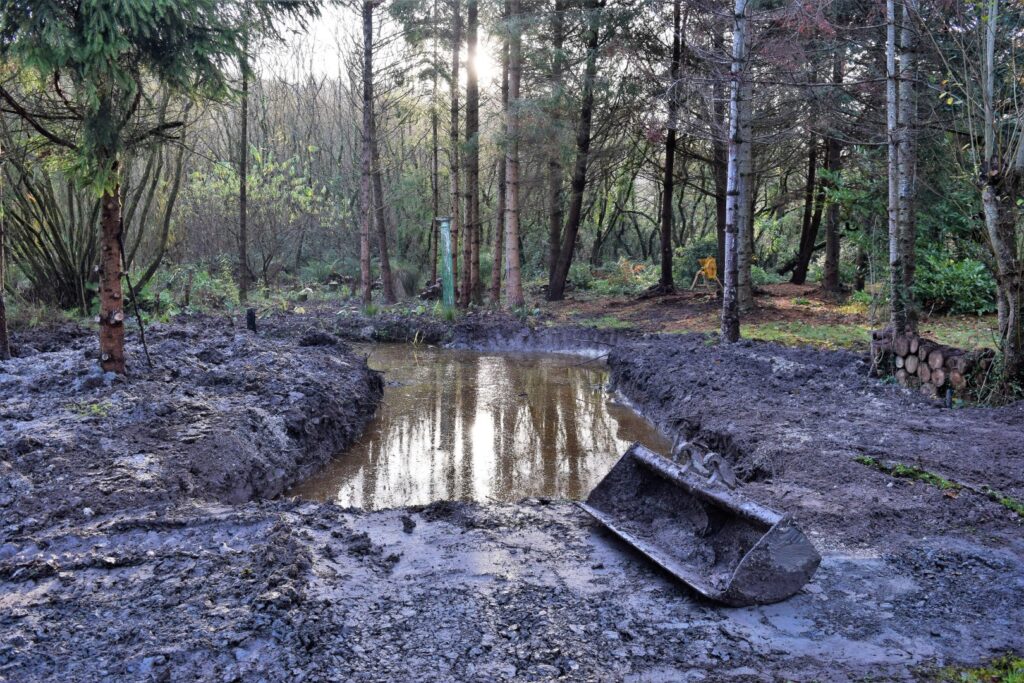
Building the Water Garden February 2021
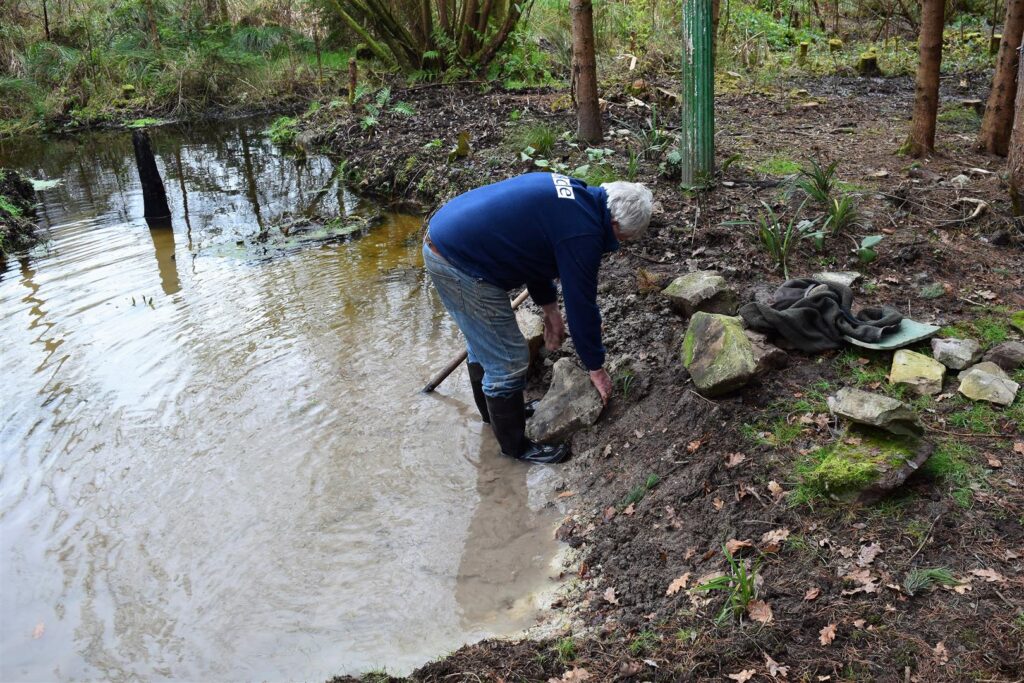
How it looks now six months later in August 2021

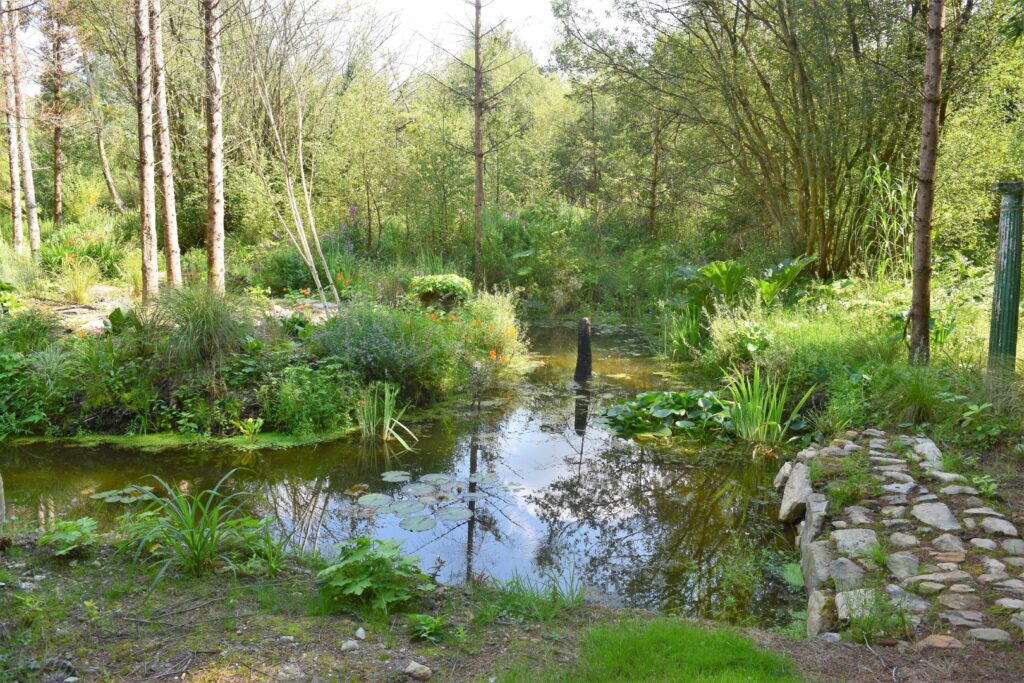
The entire area has been transformed in the six months and it was worth all the effort
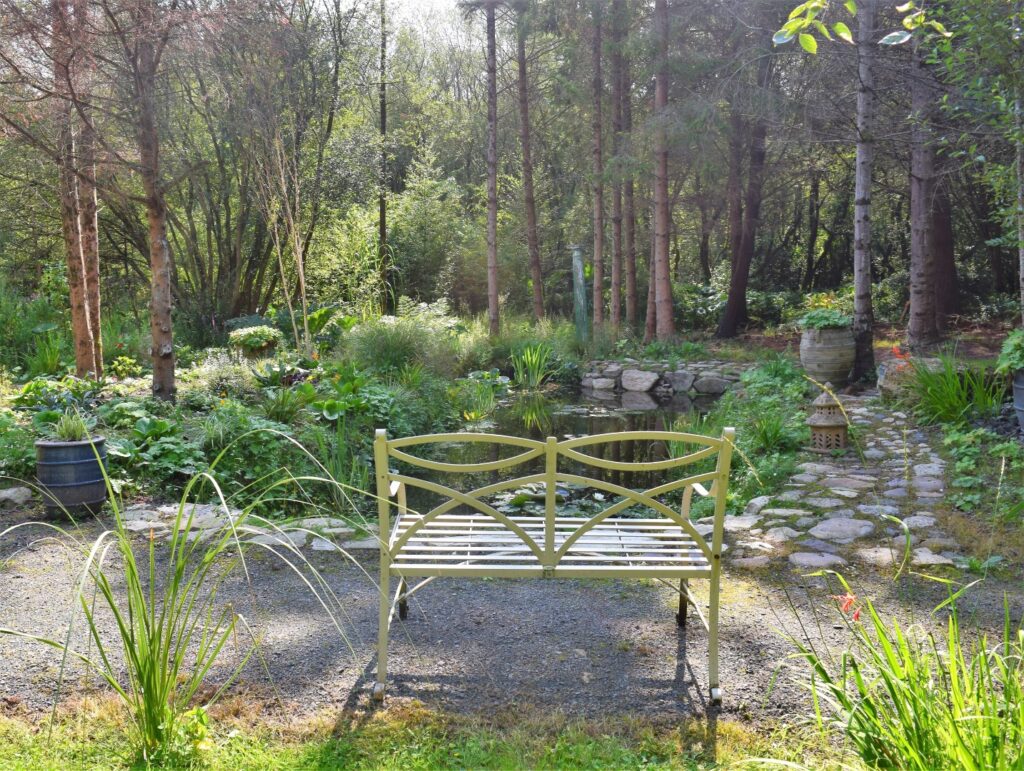
One area of the new planting has not thrived since planting it in early March , even the weeds weren’t growing in that patch and during this latest weeding blitz I discovered the reason , a long seam of heavy clayey marl lay on the surface which had been thrown up there by the excavator while dredging out the new pond last November. The presence of this marl was the reason I decided to lay a paving slab path as the surface was unweilding and the almost concrete like clay held the slabs perfectly . I had missed this piece at the time so I dug it all out now and removed the surface completely as there is nothing you can do to improve marl which has all the consistency of pliable concrete . Luckily enough the soil underneath the marl was reasonable even if a little clayey so I then dug in a few bags of John Innes compost to loosen up the surface soil and replanted with a mixture of ferns and geraniums and over the coming months I will plant more woodlander plants that hopefully will take .
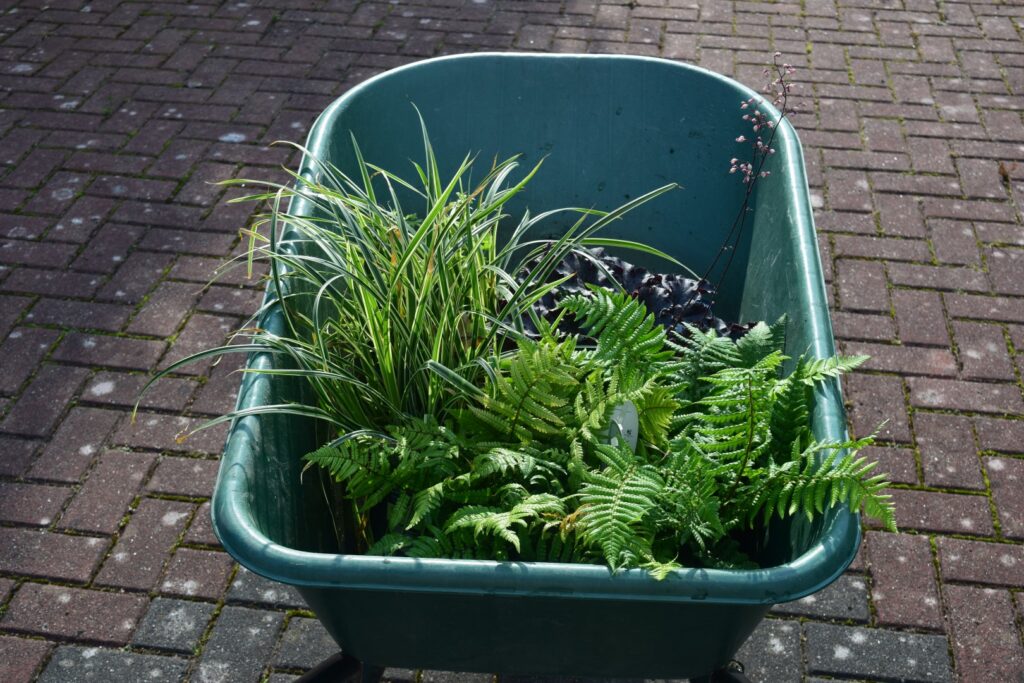
In November having laid down the ground work planting in the new area I will plant spring dwarf flowering bulbs such as daffodils , tulips and fritillarias .
A slow leisuredly weeding session on hands and knees where you can lose yourself in thought is better than any meditation or wellness spa however the three weeks weeding I had to do this month was just awful as it was catch up weeding and just a pain .
Everybody it seems nowadays is letting their lawns grow long , County Councils are letting borders along the roads grow wild and are sowing roundabout beds with wild flowers and you would think this would be a positive thing but apparently not as according to a report this week in the Irish Times in August as seed packages are being prepared with wild flowers not indigenous to the local areas and some of the resulting plants will take over to the detriment of the local wild flowers and in some cases will kill off the local varieties . Personally I am not a fan of so called “wild flower ” meadows which to quote a famous botanical report of 100 years ago is “ forging nature’s signature ” and my efforts here at a strip of land set aside without mowing for a wildflower patch has not been a success as while in the beginning of the growth in May the long grass is shiny and erect but come August it just looks sad and neglected and all I seem to grow in my managed and set aside wild flower area are thistles and docks , not a good look and mainly the reason is that wild flower planting to succeed needs dry needy soil while ours is wettish and rich soil .
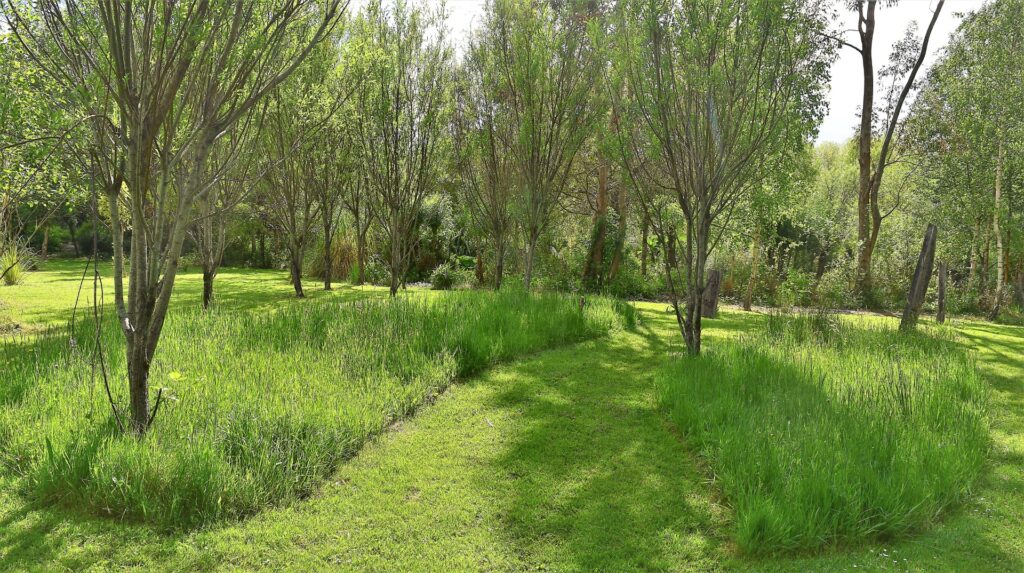
The Irish Times article quoted from the Dublin Naturalists Field Club report which stated “ Ireland has seen a wave of wildflower planting by local authorities, schools and individual enthusiasts, much of it responding to the national campaign to check the decline of bumblebees and other pollinating insects.
In central Dublin, for example, Trinity College dug up patches of manicured lawn flanking its entrance at College Green to replace them with miniature wildflower “meadows”. Widely approved and admired by passers-by, they have now, however, been included in a gallery of plantings from Co Dublin deplored by the botanists of the DNFC.
A photograph of Trinity’s flowers is included in a DNFC “position paper” setting out “the case against ‘wildflower’ seed mixtures”. Its caption sees Trinity’s miniature meadows as mass planting of “eye-catching, fast-growing, quick-flowering plants, mixing yarrow, campion, poppy, oxeye daisy and more. “This grouping,” it asserts, “misrepresents the species assemblages that would occur in nature and does not meet the complex habitat requirements of threatened insects.”
To the DNFC, however ,“simply introducing colourful flowers … at best provides a short-term food supply for some common insects that are not threatened”.
The typical mix of plant species contained in “wildflower” seed packets, it says, “is never found growing together in the wild”. Natural habitats, formed by local conditions, grow the plants adapted to them and these colonise the ground by natural means. Conserving natural habitats should be the priority. And even mowing old lawns less often can allow native species already in the soil bank to flower and set seed.
I should perhaps clarify my stance on wild flower areas and say that although I have never been a fan of “ managed ” wild flower gardens but do love the informal look that nature and self seeding brings in.
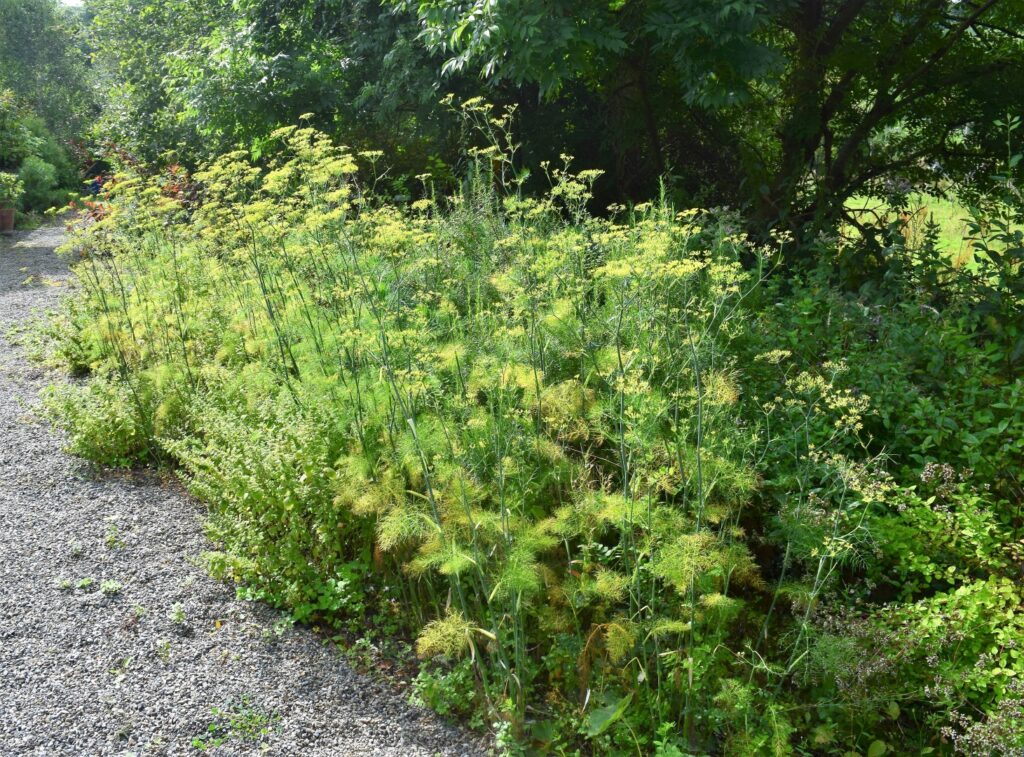
Here we have a huge amount of self seeded wild flowers , such as astilbe , iris , meadow sweet , cow parsley , loose strife , which are blown in and follow the stream and the water areas and although a lot of these are classed as weeds we actively encourage them and these plants provide a habitat for dragon flies , frogs , herons , ducks , you name it they seem to be here , encouraged and nurtured by the natural habitat while even the bull rushes in the large water garden shelter annual water hen nests and it is a real treat to see Mama water hen leading out her newly born little family … mind you our resident cat seemed to regard baby water hens as take away food until a few well placed kicks persuaded her otherwise !
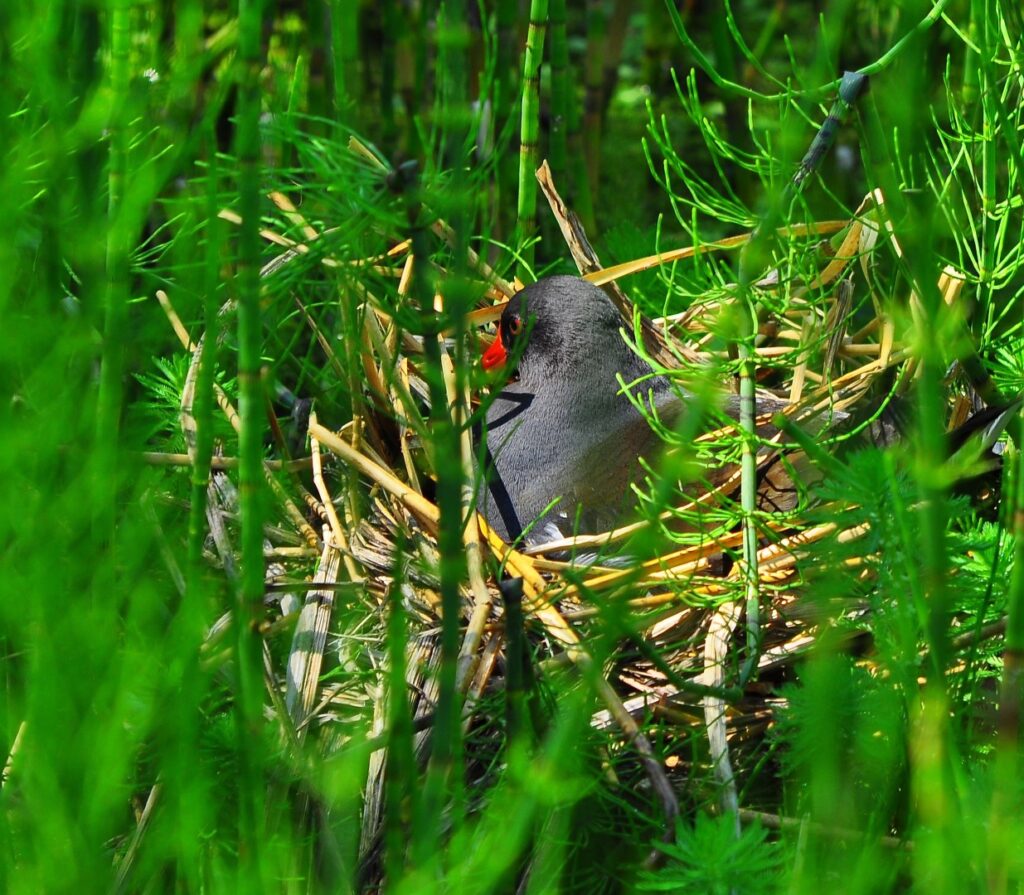
The last word on wiId flower meadows I leave to a gardening hero of mine , Robin Lane Fox ,whose books I have collected for almost forty years and who this week in the Financial Times said that the best way to look at regulated wild flower planting along the edge of a road is “ through the window of a car being driven very fast ” !!
Canna’s are a perennial you should have in the garden , a spectacular foliage plant , sold in all garden centres in various colours . They like regular watering and generally need lifting and brought inside before first frosts and out again in May although in sheltered locations they can survive in the open ground if covered with clippings although I keep mine in pots and don’t chance letting them over winter outside . They are in vogue like banana trees and come in different heights but normally top out at four feet . Personally I am happy with the normal dark colour but people go mad for the burnt orange and various hybrid tints such as burgundy available now . I attach photos from Margaret Rea’s Cahir garden last week and my own wild cannas in Croatia that I dig up every year from a deserted garden on the hill side near the garden so I am slowly building up a collection while here at Old Spa Road I just have two pots .
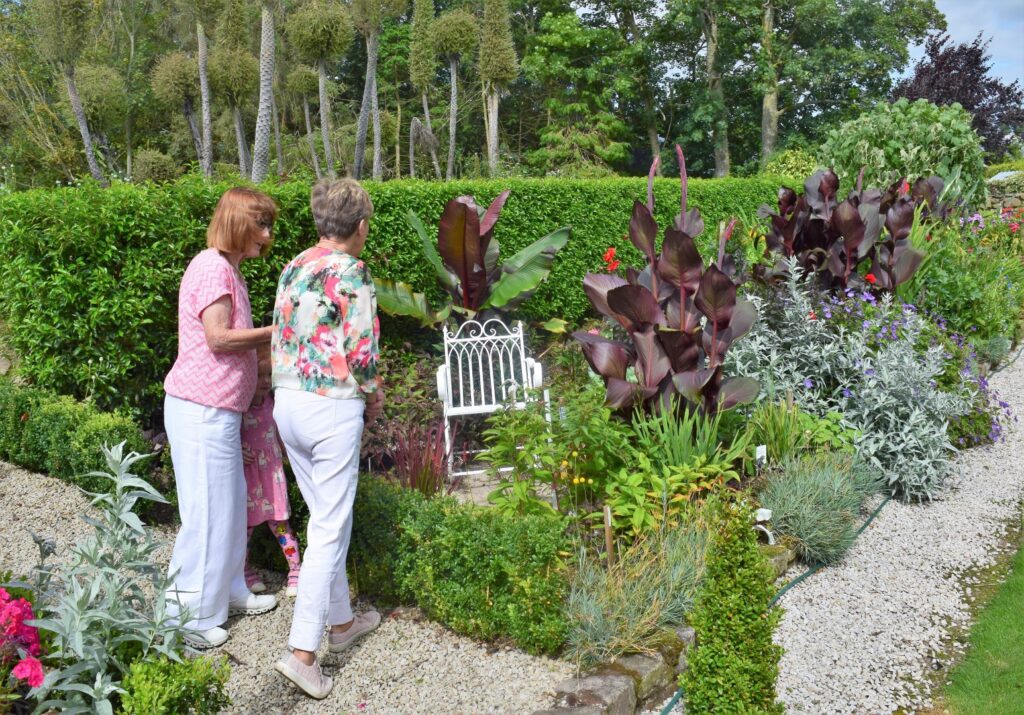
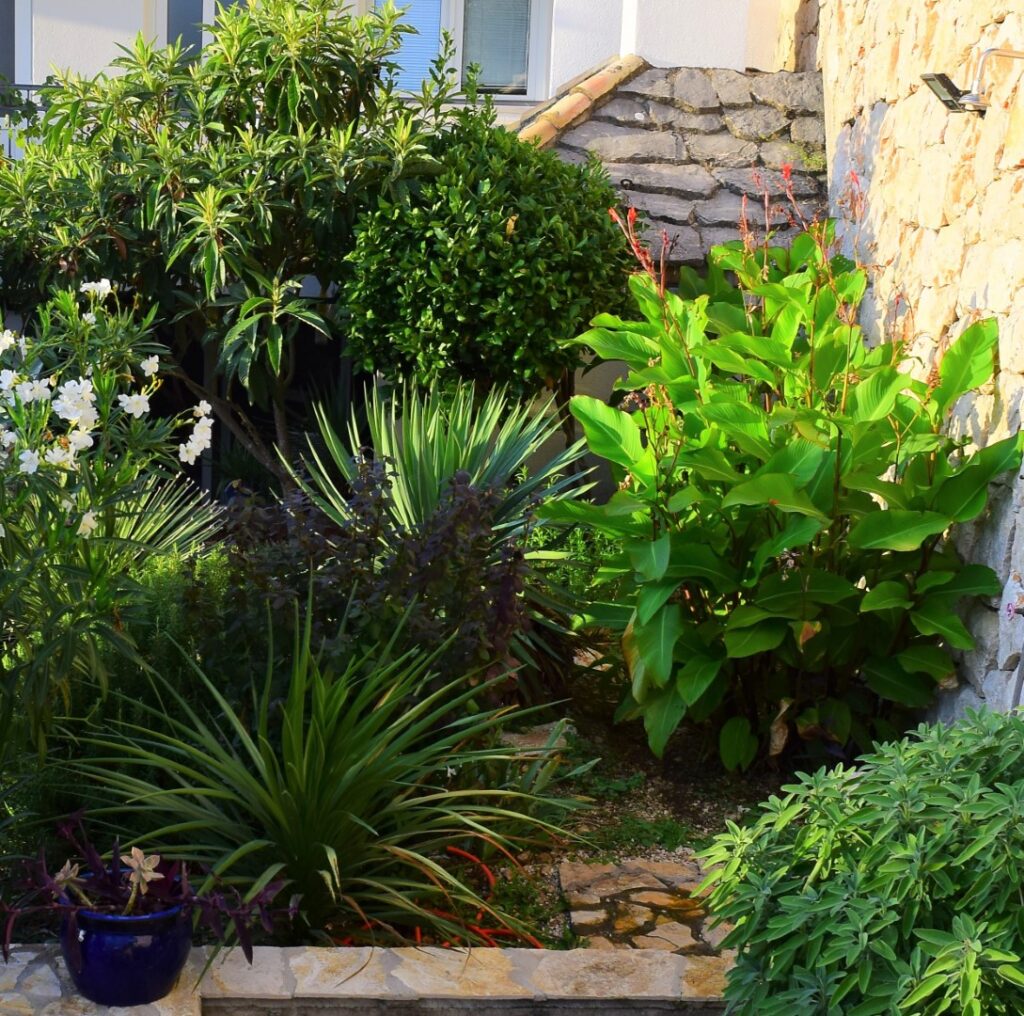
Cannas do flower but are mainly grown for their foliage but the more exotic the foliage the more tender the plants are and in any setting be it in a classic perennial bed as with Margaret’s cannas or among shrubs they are a knock out plant and even if they don’t survive the winter for you cannas are worth buying every year .
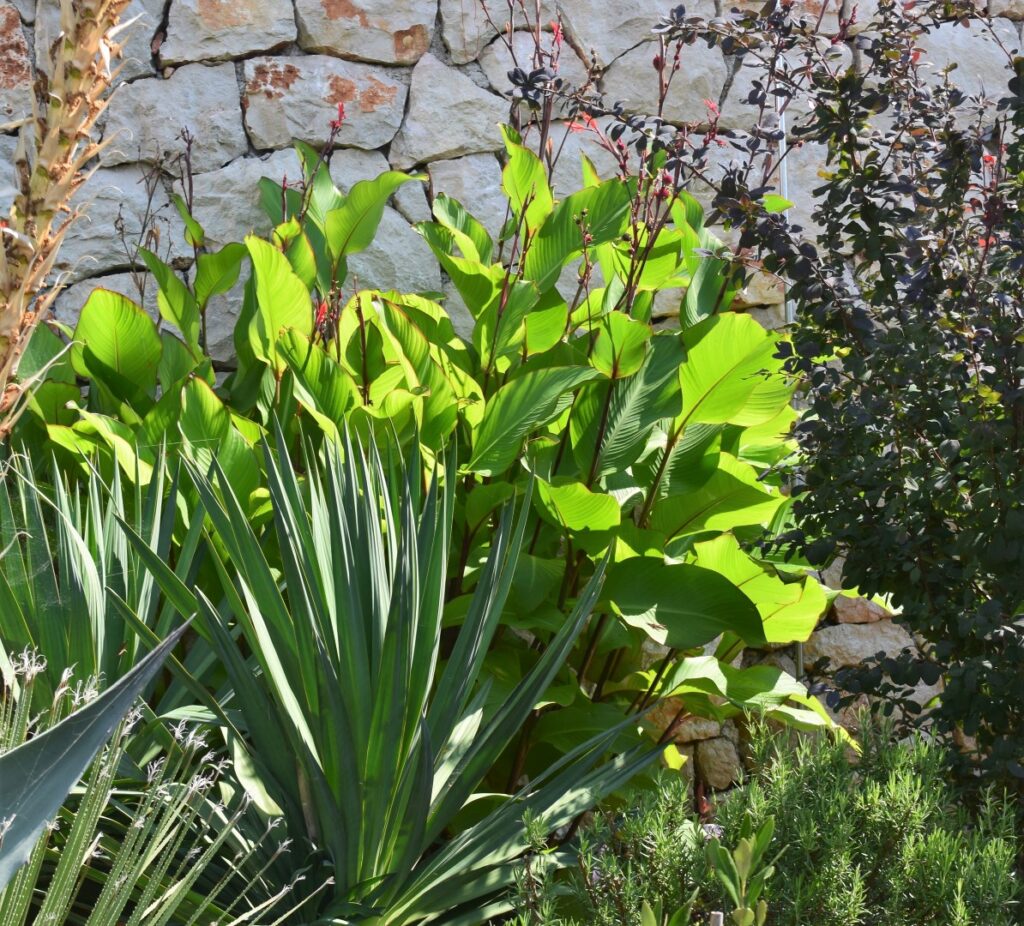
A lot of readers have commented on my favourite shrub , Rhus Cotinus ,it’s common name is the Smoke Bush tree and from Brussels came a request for further information and a photo from a local garden centre and my reply stated there are several varieties sold , all to do with the size of the leaf but the one to go for is the variety Grace which has the biggest leaves , the smaller leaf varieties are generally labelled coggygria, which is the one usually on sale as this is a better mannerred small shrub with smaller round leaves unlike the larger leafed Grace which flops and threads it’s way through any surrounding trees or shrubs and some precise gardeners don’t like this unruliness although it is part of it’s appeal for me ! From your photo It looks to me that ” old fashioned ” is the closest to Grace and I would go for that but be warned unless you are prepared to prune severely it will ramble so perhaps at the back of your shrub beds is a better location . It will grow in shade but the purple colour gets a bit bleached , good for all normal soil . I love it’s rambling informal growth and have it in different positions , front of bed , back of bed and it needs no attention apart from the odd prune here and there when it gets out of hand .
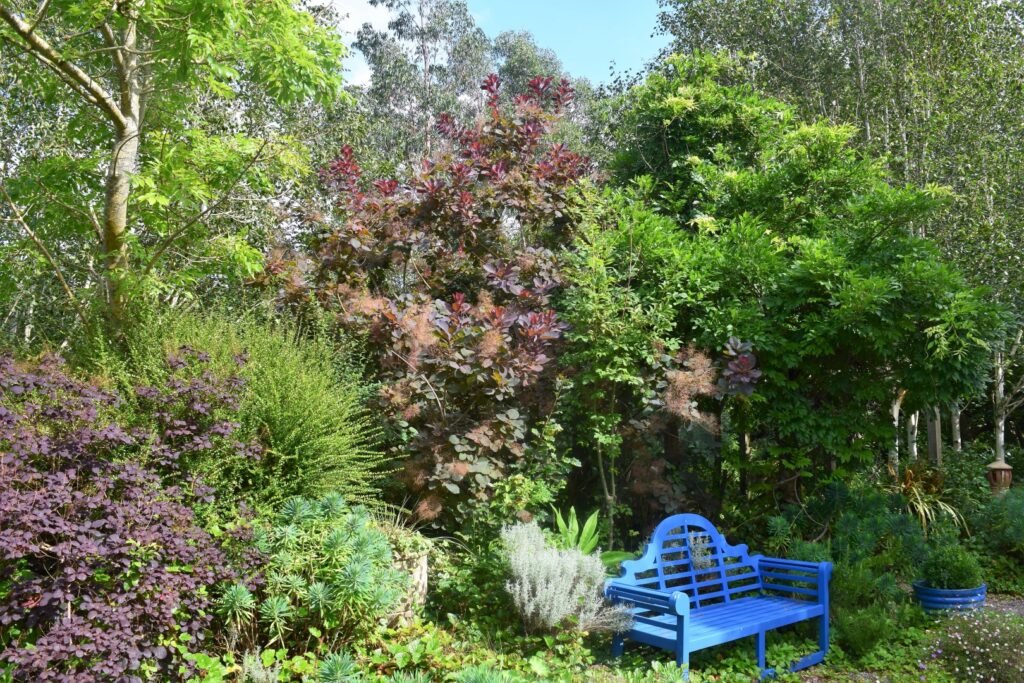
Visitors to the Garden in August 2021

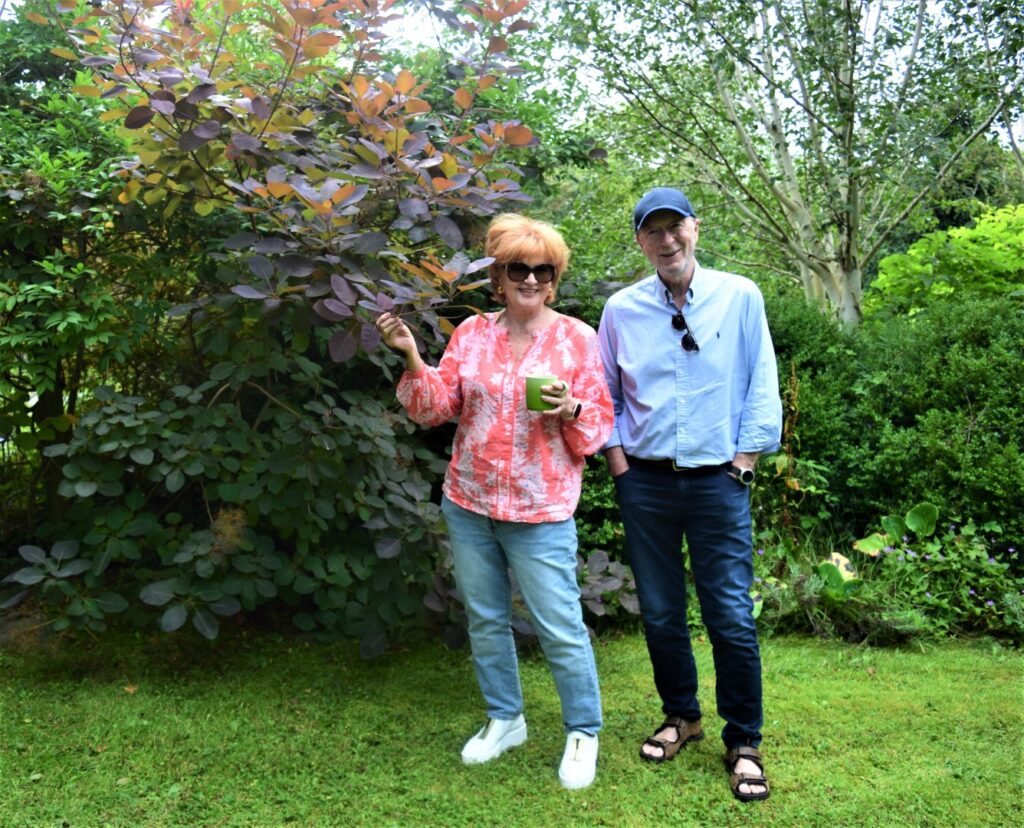
One should never write off plants as it is amazing what a little love and care can do for an ailing plant and this was the case here when our tiny olive tree seemed to give up three years ago in it’s pot .To be honest it had looked miserable for a few years before that time so I dug it out ,left it in a corner over the winter then pruned it back hard and repotted it earlier this year in a new more shaded location and it hasen’t looked back since .
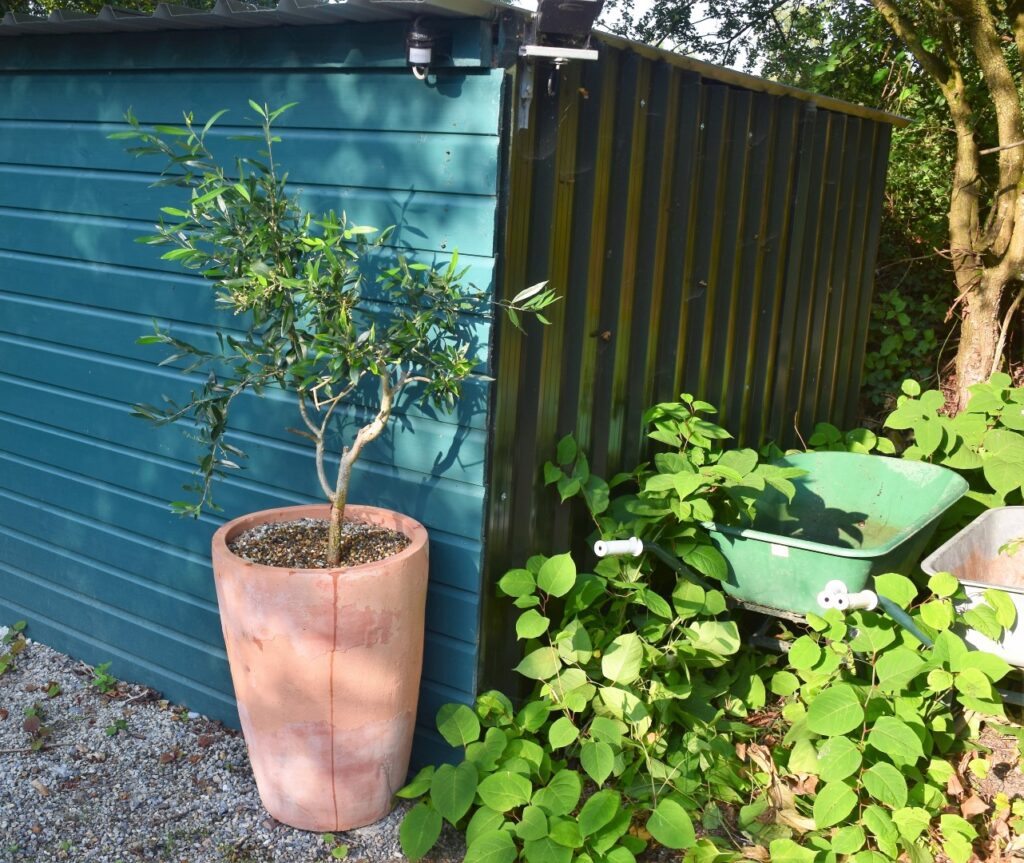
This little guy was made for our garden by a neighbour in Croatia
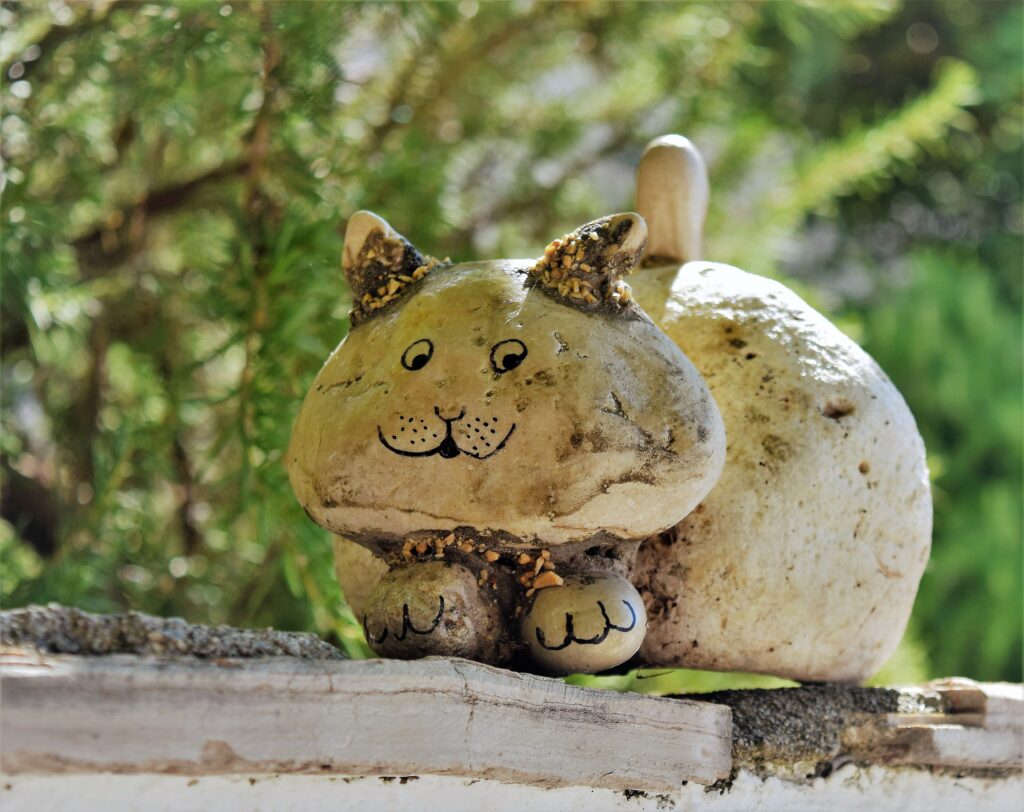
Since I wrote about my favourite plant in Croatia last month a lot have commented on the beautiful blue leaf of the tradescantia and ask if it will grow in Ireland … it will but not outdoors , it roots easily in a glass of water and I have brought cuttings back to various Irish gardening friends for whom it has thrived on a sunny window sill . In Croatia it roots easily into the open ground , dies back a little in the winter months but gallops away again in Spring and does really well if you water it occaisionally . I find it both roots and grows better away from direct sunlight which also dulls the vivid blue of the leaves and what works best for me in the garden at Gornja Podgora is dappled shade .
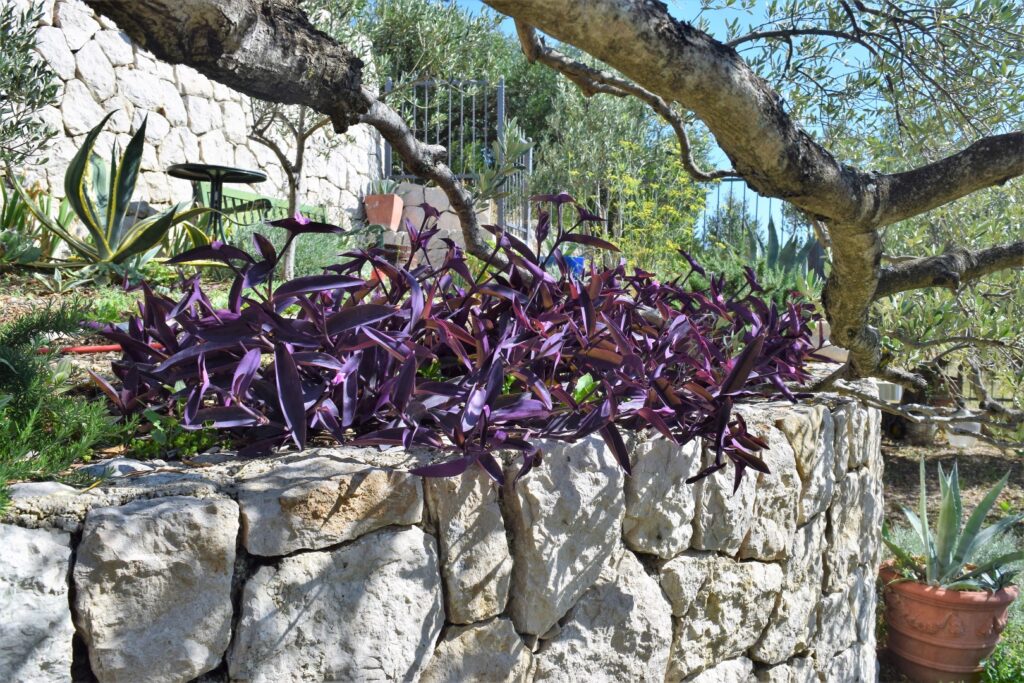


Leave a Reply